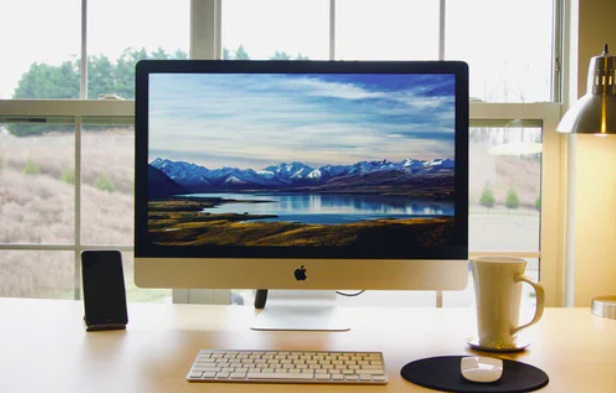Mac Security Tips From the Pros
Every operating system out there has its weak points, flaws, and areas in which it can be manipulated, if you know how. While Macs have earned a reputation for being systems that offer everything a modern user would need, security is one area that can always be improved regardless of which system is in question.
However, while the security of the platform does play an important role in how safe your overall experience is going to be, the environment in which you operate also has a big impact, specifically the network environment that you are using. There are many factors that influence security and how easy or difficult it will be for an attacker but there are some general guidelines that any Mac user can implement to improve the core security of their system. Here are a few steps that are beginner-friendly and highly effective.
 Picture 1 of Mac Security Tips From the Pros
Picture 1 of Mac Security Tips From the Pros
1. Dedicated Accounts
This is especially helpful for people who are sharing their Mac device or even for those who have the same device for both work and personal use. While this keeps the amount of influence a user has, it can also act as a form of protection. When you create different users or groups of users, you have the ability to choose between giving an account administrative control or not. Ideally, you should have one main account which has administrator status and all other accounts with limited access or basic guest accounts. Even if you are the only user, it would be a great idea to create a basic account for your usage and have a separate account with administrator rights that you can use if you need to do something that requires administrator permissions.
2. Anti-Virus
It's probably the oldest trick in the book, everyone knows they should be using an antivirus but no one really is. The fact that antiviruses have been around for so long makes them a system protection that is taken for granted but you can underestimate the power of solid antivirus software. Considering the recent rise of malware for macOS, antiviruses have become even more important as they help defend your system from a variety of harmful software. Modern antiviruses are designed to ward off the latest forms of malware, spyware, and adware. So, get yourself a good antivirus and keep it updated.
3. Phishing
When it comes to digital attacks, not antiviruses which are just pesky software, but actual attacks that are directed at specific people, phishing scams are at the top of the list. Attacks on Mac users are growing and phishing attacks specifically have more than doubled in the past few years. To protect yourself from phishing, you need to improve Safari privacy settings to minimize the possibility of someone looking in on what you are doing. A great way to do this is to use private browsing windows while clearing your cookies and changing your cookie settings to not allowing cookies also helps.
4. Find My Mac
If you have a Mac then this is one of the unique features of this platform that you should definitely make use of. As the name suggests, this service literally helps you find your Mac in the case that it is lost or stolen, though it does require the device to have location settings enabled for this service to work. Moreover, even if you aren't able to locate your device, you still have the option to clear the device of any data that you have on it. Ideally, you should have backed up your data beforehand so that in the case that your device goes missing, you can easily wipe it and still have access to your data.
 Picture 2 of Mac Security Tips From the Pros
Picture 2 of Mac Security Tips From the Pros
5. Multi-Factor Authentication
More than a strong password, use multifactor authentication to verify each login and make sure it is you who is accessing the device. You can set up two-factor authentication on your device and use this protocol as well for a lot of online accounts. Use this wherever you can and spend an extra minute signing in to ensure your safety.
While there is no hard and fast rule about which system is more secure in terms of PC vs. Mac, the fact of the matter is that there are certain technologies, systems, and protocols that can be exploited to gain access to a system. Both platforms use these technologies such as online account logins, cookies, and other exploitable sources. Your aim should be to protect these access points and do whatever you can, to make gaining access as difficult as possible.
You should read it
- 7 security tips you can learn from the movie The Avengers
- 5 security tips for the Raspberry Pi
- 10 online security tips from Google
- Apple expanded the size of the security bug detection program to receive bonuses, including macOS, a maximum bonus of $ 1 million
- 10 tips to help Windows security
- Security tips for Google, Facebook and online services
- The program 'find money exchange errors' on Facebook, the maximum prize up to 40 thousand USD
- Tips to find the lost AirPods headphones again
- 8 Cyber Security Tips that Everyone Should Be Aware of
- Don't ignore these 10 security tips when creating a new website
- How to find the SID (Security Identifier) for a user account in Windows
- Find security holes on every site with Nikto






 7 security tips you can learn from the movie The Avengers
7 security tips you can learn from the movie The Avengers What is 3D Face Security? On which phone?
What is 3D Face Security? On which phone? 5 security tips for the Raspberry Pi
5 security tips for the Raspberry Pi 10 online security tips from Google
10 online security tips from Google 11 Creative Photo Editing Tips That The Pros Use to Stand Out
11 Creative Photo Editing Tips That The Pros Use to Stand Out Wireless traffic security - Part 3
Wireless traffic security - Part 3